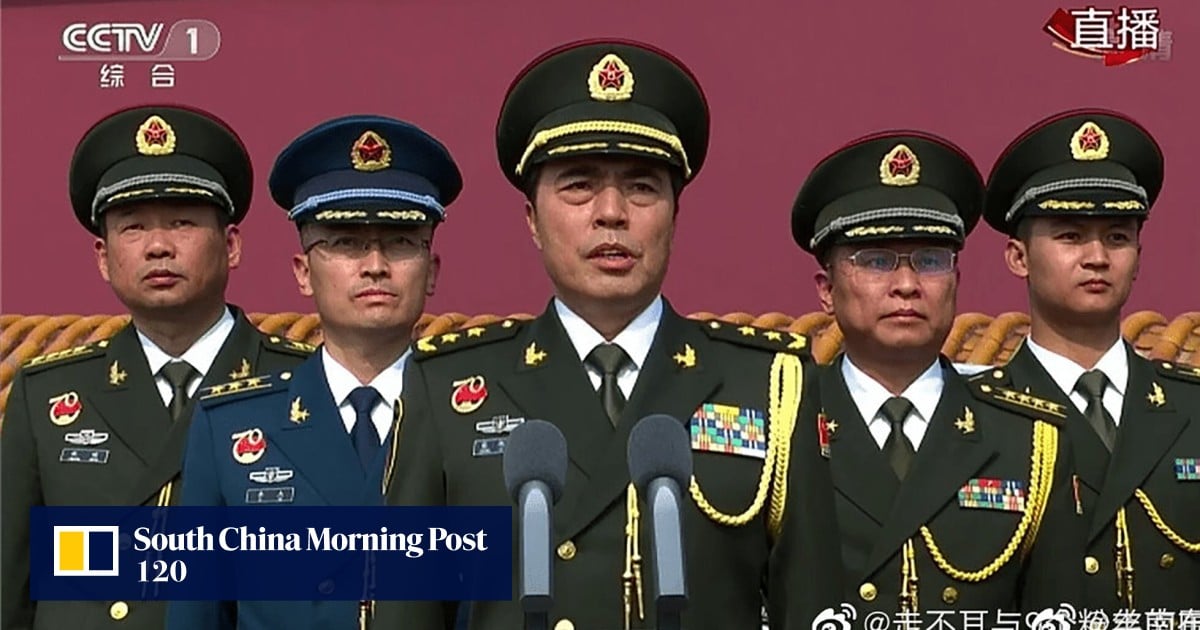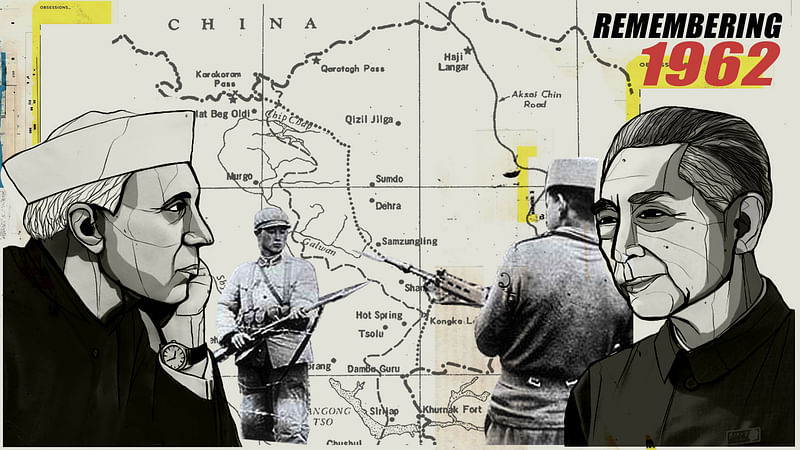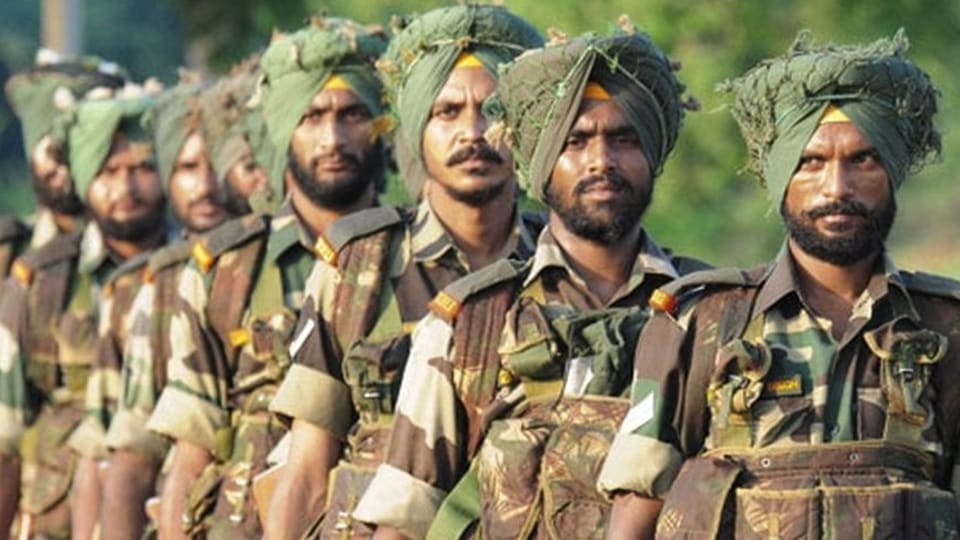Many factors led to Army giving up in 1962. But psychological collapse played a big role
The Army had studied PLA tactics in the Korean War and knew the antidote to its strategy. But on ground, it violated all the fundamentals.
LT GEN H S PANAG (RETD)
17 November, 2022 12:31 pm IST
The defeat of the Army in Phase 1 — 20 to 27 October — of the 1962 India-China war can be attributed to flawed political decisions, based on the premise that China will not initiate a war, and the acquiescence of the military leadership. Aggressive competitive flag-marking and a foolhardy plan to throw the Chinese out of Thagla Ridge led to the war. Isolated troops fighting from non-tactical defences without adequate logistics put up a heroic fight but were defeated in a matter of a few hours of actual fighting.
In Phase 2 — 14 to 20 November — there was little to no political interference. The Army was defending the ground of its own choosing with one divisional and two brigade-defended sectors. Main defences were connected by road except for Walong and air supply continued uninterrupted. All sectors were prepared for 7 to 10 days of battle. Yet, this formidable force was routed within two days of actual fighting.
At Sela-Dirang-Bomdila, 4 Infantry Division “psychologically collapsed” and disintegrated virtually without a fight in 24 hours. At Chushul, 114 Infantry Brigade inexplicably withdrew with a loss of only two companies out of 12. Only 11 Infantry Brigade at Walong fought a cohesive battle for 48 hours before withdrawing.
Flawed appreciation of enemy, terrain and weather, and psychological collapse of the leadership, which had a cascading effect on the rank and file, were the primary reasons.
Adverse terrain and weather
The campaigning season in the high-altitude areas of Ladakh and the North-East Frontier Agency (NEFA) is from June to November. Logistics and the troop built up for Phase 2 of the war were completed only by mid-November, leaving only 15 days for effective military operations. December onwards, operations get severely restricted due to the extreme cold and snow. There was no way the People’s Liberation Army (PLA) could have sustained a large force in winter over tenuous and lengthening lines of communication with then-available infrastructure. The relative advantage was with the defender.
Our communications had shortened, and additional troop buildup was rapidly taking place. All that the Army had to do was to hold fast for two weeks to force a winter pause and possible withdrawal by the PLA. The Indian military leadership — from the Chief of Army Staff (COAS) to brigade commanders — failed to appreciate the terrain and weather factor and also lacked the will to defend resolutely. That the Chinese, obliged by our psychological collapse, announced a unilateral ceasefire and withdrawal to begin on 21 November and conveyed it to the Indian chargé d’affaires on 19 November, only proves the point. Ironically, on that very day, 4 Infantry Division was abandoning its defences without a fight and an intact 114 Infantry Brigade began its withdrawal from Chushul.
Enemy strength
The commanders had little to no knowledge of the enemy strength. In Ladakh, the PLA had only one division available for operations as is now known from Chinese accounts. Given the vast sector, it had to regroup to attack Chushul with barely one reinforced regiment. Hence, at best, it had the capacity to capture three to four infantry company-defended localities. In reality, it captured only two. It did not have any residual force to progress further. Yet, such was the moral ascendency of the PLA that 114 Infantry Brigade was ordered to withdraw to defend Leh.
At Sela-Dirang-Bomdila, 4 Infantry Division did not appreciate the fact that the PLA could build up to three divisions for the offensive, which was a remarkable feat as it was operating over the same area where we could barely commit one brigade. Consequently, the simultaneous envelopment, isolation and attack on all three brigades led to the collapse of 4 Infantry Division without a fight.
PLA tactics
The PLA was a seasoned army that had won a prolonged civil war lasting for two decades. It also fought the Japanese from 1937 to 1945 on the mainland and in erstwhile Burma. In Korea, from 1950 to 1953, it evicted the United States and United Nations forces from North Korea to ensure a stalemate along the 38th parallel. It had mastered the art of manoeuvre. Infiltration, outflanking, and isolation tactics to envelope enemy defences were its forte.
Sela, was attacked from all directions with one division. Simultaneously, from the east, a division minus one regiment using the 161 km-long Bailey Trail over very treacherous terrain, isolated and attacked Dirang and Bomdila and cut off the road axis. Another division infiltrated from the shorter western flank, and so did a battalion from the eastern flank to isolate Sela, assist in its capture and also attack Dirang and Bomdila. Thus, the divisional defended sector was cut into three parts with all routes of escape blocked.
At Walong, the PLA preemptively outflanked the defences to secure the higher features in the west to attack from a position of advantage and also threatened the rear of the brigade, making the defences tactically untenable to force a withdrawal. At Chushul, the two flank companies were captured to make the rest of the Kailash Range tactically untenable and also threatened the only road axis, from Rechin La.
Indian Army tactics
The Army had studied PLA tactics in the Korean War in detail and knew that the antidote to infiltration, envelopment and isolation, was to remain steadfast in main defences, keep the flanks and infiltration routes under surveillance to prevent or delay enemy advance along these approaches, and maintain an adequate reserve for spoiling/counterattacks. However, on ground, it violated all these fundamentals.
There was a fundamental flaw in the deployment of 4 Infantry Division. As per all appreciations done over the years, the Bomdila-Mandala complex was considered the best defensive position as it stretched the enemy’s lines of communications and shortened ours and could not be easily bypassed. The altitude was 9,000 to 10,000 feet. A compact divisional defended sector would have forced the PLA to attack from lower to higher heights. If Sela had to be defended, there was a requirement for an additional brigade to cater for the outflanking movements.
No viable effort was made to delay or defend the outflanking/infiltration manoeuvre of the PLA via Poshing La to Dirang and Bomdila or around Sela defences. Fire brigade actions at a late stage only led to denuding the defences of Dirang and Bomdila. As a result, the PLA was able to attack and threaten all brigade-defended sectors with a division-size force. All defended sectors were stocked for 7 to 10 days. A determined fight would have forced the culmination of the PLA’s attack as the bulk of its forces was operating on a man-pack basis. Instead of a determined fight, the divisional commander panicked, and the corps commander also lost his nerve to order a withdrawal that turned into a disorganised flight to the rear. The Chief of Army Staff, Eastern Army Commander and the Director General of Military Operations were present at the corps headquarters as mute spectators when this fatal decision was taken. For the Indian Army, 17 November 1962 was a disgraceful day.
At Chushul, 114 Infantry Brigade failed to secure the dominating feature called Black Top, which was initially not held, allowing the enemy to attack Gurung Hill from higher ground. No attempt was made to secure the eastern spurs of Kailash Range or carry out a covering action or aggressive patrolling to prevent the buildup of the enemy. The main effort was to defend the Spanggur Gap approach, which tactically was least likely to be used. More so when we also had six tanks to guard the same.
There was a yawning gap of 10 km between Magar Hill and Rezang La, and the most dominating feature, Mukhpari, was not held, allowing both to be isolated and attacked from flanks and rear. Rezang La on limb without fire support was literally set up for slaughter. Despite the odds, two of the most heroic battles of the war were fought at Rezang La and Gurung Hill. Inexplicably, one battalion, which was in depth and not even shelled, and the troops in the valley were not used for a counter-attack. The PLA had no capacity to progress further operations beyond the Kailash range or in any other sector, let alone to advance Leh. The corps commander took counsel of his fears and withdrew an intact brigade after a loss of only two companies to defend Leh, 160 km behind.
At Walong, the fundamental error was not to hold the higher features on the western flank, allowing the brigade to be attacked from higher to lower ground and also isolate the entire sector. However, 11 Infantry Brigade fought a cohesive battle. Apart from aggressive patrolling, a heroic spoiling attack was launched by the 6 Kumaon and 4 Dogra to preempt the use of the vulnerable western approach. Unfortunately, once it failed, the brigade defences became untenable, and a relatively, better-organised withdrawal followed within 12 hours of the main attack.
Psychological collapse
It is empirical wisdom that the outcome of battle lies in the minds of the commanders and the troops. Both the attacker and the defender endeavour to create rapidly changing situations to make the adversary perceive that they can not cope with them. This brings about a psychological collapse and defeat. In attack, this is created by relatively higher mobility, manoeuvre, isolation, firepower, and finally, tactical battle for dominating ground. The defender tries to neutralise all these factors by aggressively interfering with and delaying the buildup and manoeuvre from the flanks, prevent isolation by deployment in depth, spoiling attacks, determined fight at the main defences and counterattack. As brought out earlier, the PLA tactics exploited all these factors, and the Indian Army remained passive in defensive positions. The outcome was inevitable.
The moral factor played a big role. The rout and destruction in Phase 1, particularly, the complete decimation of the 7th Infantry Brigade, adversely affected the psyche of the commanders and the troops. The PLA’s moral ascendency was absolute. How else can one explain the disintegration of 4 Infantry Division even before the battle began and the withdrawal of an intact 114 Infantry Brigade from Chushul? The Indian Army, despite all odds, had the capability to defeat the PLA in Phase 2 of the war, but it psychologically collapsed and gave up without a fight.
The Army had studied PLA tactics in the Korean War and knew the antidote to its strategy. But on ground, it violated all the fundamentals.

theprint.in




















